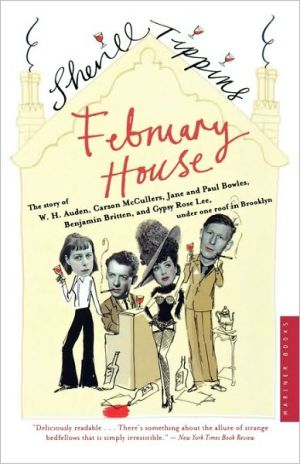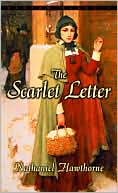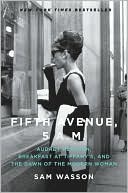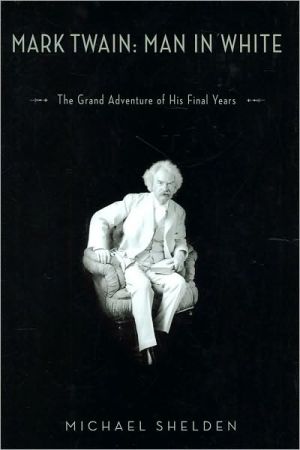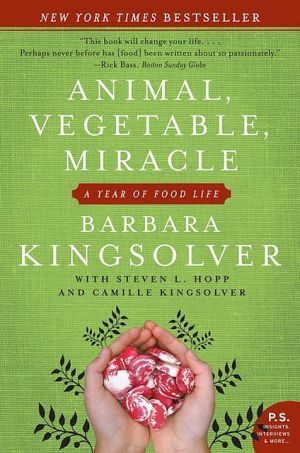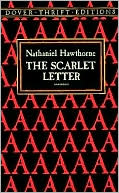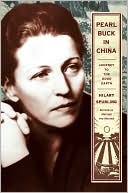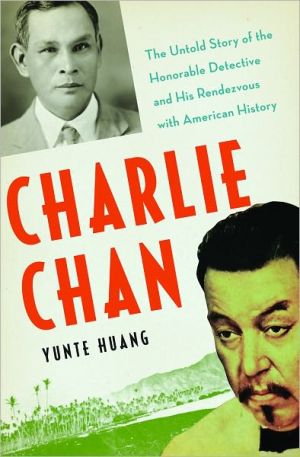February House
In this captivating book, Sherill Tippins brings to life the story of what was possibly the most fertile and improbable live-in salon of the twentieth century. Known as February House, its residents included, among others, Carson McCullers, W. H. Auden, Paul Bowles, and the famed burlesque performer Gypsy Rose Lee. This ramshackle Brooklyn brownstone was host to an explosion of creativity, an extraordinary experiment in communal living, and a nonstop yearlong party fueled by the appetites of...
Search in google:
In this captivating book, Sherill Tippins brings to life the story of what was possibly the most fertile and improbable live-in salon of the twentieth century. Known as February House, its residents included, among others, Carson McCullers, W. H. Auden, Paul Bowles, and the famed burlesque performer Gypsy Rose Lee. This ramshackle Brooklyn brownstone was host to an explosion of creativity, an extraordinary experiment in communal living, and a nonstop yearlong party fueled by the appetites of youth. Here these burgeoning talents composed many of their most famous, iconic literary works while experiencing together a crucial historical moment--America on the threshold of World War II.The New York Times - Amanda VaillWhere February House succeeds is as a story of young artists trying to become themselves -- a story Auden might have been trying to tell in the libretto for his and Britten's failed Paul Bunyan opera. ''It is a forest full of innocent beasts,'' he wrote -- was he thinking, at all, of his Brooklyn house, full of British poets and composers, Manhattan magazine editors, neurasthenic Southern novelists, refugee German journalists, all of them with their most important work before them? ''It is America,'' he said then, ''but not yet.''
Preface\ New York is full of old people, struggling to occupy their allotted space despite the pressures of the younger generations pushing in. Elbowed by joggers, hedged in by cyclists, they make their daily odysseys to the supermarket and then retreat to the safety of their homes. As one of tens of thousands of college graduates moving to New York City in the 1970s, I was as oblivious as the next twenty-two-year-old to this segment of the population. A decade later, as a new mother in Brooklyn Heights, a neighborhood of brownstones facing Wall Street across the East River, I merely noted the number of people with aluminum walkers on the sidewalks as I maneuvered my child’s stroller around them. A few years on, however, when I began volunteering to deliver meals to the housebound and got to know many of these people as individuals, I began to regret my past indifference.\ Many liked to talk, and I found that I liked to listen. The octogenarian who had covered her walls with her own arresting paintings told me about the silent-film actress who had once lived at the nearby Bossert Hotel and ordered up a milk bath every day. The retired city councilman with the fierce gray eyebrows described the spectacular sunsets, enhanced by post-Depression factory fumes, that he had so enjoyed on his homeward walks over the Brooklyn Bridge. The chain-smoking former navy officer recalled the rich scent of chocolate that used to waft through the streets from a Fulton Street candy factory before World War II. I learned, too, how the Brooklyn Dodgers got their name (Brooklyn residents were once called “trolley-dodgers” because of the many speeding trolley cars on the borough’s streets); how a working-class girl could enjoy a free daily swim at the St. George Hotel’s swank saltwater pool (all it took was a doctor’s note); and what Irish-American children were told when they found an orange in their Christmas stocking (“Thank Mr. Tammany, not Santy Claus”).\ Most intriguing to me, however, were the references to a house that once stood at 7 Middagh Street (pronounced mid-daw), a short, narrow lane at the neighborhood’s northeastern tip overlooking the former dockyards and, beyond, New York Harbor. The house had been rented, one neighbor told me, by a group of well-known young poets, novelists, composers, and artists the year before America entered World War II. Aware that enormous devastation lay ahead and determined to continue contributing to the culture as long as possible, they had created an environment for themselves to support and stimulate, inspire and protect—just a few blocks from where I lived.\ When I learned that these residents included the poet W. H. Auden, the novelist Carson McCullers, the composer Benjamin Britten, Paul and Jane Bowles, and, of all people, the burlesque artist Gypsy Rose Lee—all under thirty-five but already near the apex of their careers—my interest was piqued even further. In a pictorial survey of Brooklyn’s history, I found a photograph of the house—a small, shabby brick and brownstone structure with elaborate Tudor trim. The man who had signed the lease and organized this experiment in communal living turned out to have been George Davis, a fiction editor at Harper’s Bazaar who had single-handedly revolutionized the role played by popular magazines in bringing serious literature and avant- garde ideas to the American masses. Davis was known for his attraction to the eccentric in culture, in entertainment, and in his choice of friends. With his encouragement, nights at the Middagh Street house became a fevered year-long party in which New York’s artistic elite (Aaron Copland, George Balanchine, Louis Untermeyer, Janet Flanner, and Louise Dahl-Wolfe, among others) mingled with a flood of émigrés fleeing Nazi-occupied Europe, including the composer Kurt Weill and the singer Lotte Lenya, the artist Salvador Dalí and his wife, Gala, and the entire brilliant family of the Nobel Prizewinning novelist Thomas Mann. Days, however, were dedicated to their work—writing, composing, painting, and otherwise seeking new answers, new approaches to life in a collapsing world.\ By the winter of 194041, 7 Middagh—called “February House” by the diarist Anads Nin because so many of its residents had been born in that month—had developed a reputation as the greatest artistic salon of the decade. Denis de Rougemont, the author of Love in the Western World, claimed that “all that was new in America in music, painting, or choreography emanated from that house, the only center of thought and art that I found in any large city in the country.” Throughout the months of that suspenseful season, as Hitler’s armies tightened their hold on Europee and killed or wounded thousands of British citizens in bombing raids, Thomas Mann’s son Klaus labored in the Middagh Street dining room, assssssembling essays, poems, short stories, and reviews for Decision, a monthly “review of free culture,” while upstairs in the parlor, the British émigrés Benjamin Britten and W. H. Auden worked together on an “American” opera that would express their hopes for and misgivings about their adopted country. On the third floor, McCullers agonized over the opening paragraphs of The Member of the Wedding, while in the room next door George Davis coached Gypsy on her own project, a comic burlesque mystery novel called The G-String Murders. Bowles, then a composer, wrote a ballet score in the cellar while his wife, Jane, did Auden’s typing and wrote her own novel, Two Serious Ladies. Oliver Smith, destined to become one of Broadway’s most prolific set designers and producers but then a destitute twenty-two-year-old, washed the dishes, tended the furnace, and, like many “youngest children,” took on the role of family peacemaker. Auden, one of the greatest poets of his generation, served as housemaster to this lively household—which at one point included several circus performers and a chimpanzee—collecting the rent, dispensing romantic advice, playing word games with his housemates, and strictly enforcing nighttime curfews—all while laying the groundwork for some of the most courageous and original work of his career.\ Perhaps inevitably, the intensity of life at 7 Middagh and the pressures created by the war in Europe led to physical and emotional breakdowns, domestic disputes, and creative crises. Even as the residents succumbed to the pressure of the times, so too did the United States. The attack on Pearl Harbor, on December 7, 1941, provoked America’s entry into the fiercest and most destructive war in history—a six-year conflagration that killed fifty-five million people before it ended. As the artists of 7 Middagh Street had expected, they were scattered in all directions by these events. Some enlisted as soldiers. Others used their skills to create propaganda, conduct surveys, or entertain the troops. And, in the sweeping changes that took place over the next half-decade, 7 Middagh Street itself disappeared, torn down to make way for the construction of the Brooklyn-Queens Expressway. Today, nothing remains but an unmarked stretch of sidewalk, a wire fence, and a precipitous drop to the lanes of traffic speeding from one borough to the next.\ What does remain is the work these artists created. The final parts of Auden’s book The Double Man, his poems “The Dark Years,” “If I Could Tell You,” “In Sickness and in Health,” and the brilliant and innovative oratorio For the Time Being, were all completed during or inspired by the year at 7 Middagh. The twenty-seven-year-old Benjamin Britten gained both the artistic experience and the emotional growth necessary to create his first great opera, Peter Grimes. Carson McCullers’s two final masterpieces, The Member of the Wedding and The Ballad of the Sad Café, were born in Brooklyn. Auden’s support helped Jane Bowles take the first necessary steps toward completing her only serious novel, while Paul Bowles’s jealousy over their relationship spurred him toward the writing of fiction for which he is now largely known. Even Gypsy’s G-String Murders, written with the help of her admiring housemates, became a 1941 bestseller, establishing her reputation, not just as a stripper who could write, but as a writer who also knew how to keep an audience entranced.\ Frequently, I go out of my way to pass the dead-end street where the house once stood just to remind myself that these extraordinary artists actually occupied the space I do now—living together, arguing, laughing, creating, and using their imaginations to increase others’ awareness of the issues and choices laid bare in that horrible, horrifying time. If we don’t act now, when will we? they asked themselves in choosing this shared creative life. If we don’t use our talents to find a new way to live, who will?\ How this houseful of geniuses answered those questions is the story my elderly neighbors wanted me to hear. But the questions themselves are what keep me coming back, dreaming of the house at 7 Middagh.\ Copyright © 2005 by Sherill Tippins. Reprinted by permission of Houghton Mifflin Company.
Contents List of Illustrations ix Preface xi Part I The House on the Hill June – November 1940 1 Part II The Bawdy House December 1940 – February 1941 113 Part III The House of Genius March – December 1941 179 Epilogue 244 Author’s Note and Acknowledgments 261 Notes 264 Selected Bibliography 291 Credits 298 Index 303
\ From the Publisher"[An] irresistible bonbon of a book . . . The house itself has long since been demolished, but Sherill Tippins has rebuilt it with intelligence and charm." The Washington Post"A cozy, gossipy read." The New Yorker"A magnificent—not to mention funny and raunchy—memorial to the place in prose." Seattle Times Post-Intelligencer"Brimming with information . . .Tippins has great affection for her protagonists . . . The personalities she depicts [are] indelibly drawn." Los Angeles Times"Deliciously readable...There's something about the allure of strange bedfellows that is simply irresistible." The New York Times Book Review\ \ \ \ \ Dennis Drabelle… overall, this is a bracing story. A number of gifted artists came together, stimulated one another and got started on important works. The house itself has long since been demolished, but Sherill Tippins has rebuilt it with intelligence and charm.\ — The Washington Post\ \ \ Amanda VaillWhere February House succeeds is as a story of young artists trying to become themselves -- a story Auden might have been trying to tell in the libretto for his and Britten's failed Paul Bunyan opera. ''It is a forest full of innocent beasts,'' he wrote -- was he thinking, at all, of his Brooklyn house, full of British poets and composers, Manhattan magazine editors, neurasthenic Southern novelists, refugee German journalists, all of them with their most important work before them? ''It is America,'' he said then, ''but not yet.''\ — The New York Times\ \ \ \ \ The New YorkerIn 1940, George Davis, an editor recently fired from Harper’s Bazaar, rented a dilapidated house in Brooklyn Heights in which he installed brilliant, volatile artists, who spent the next year working, fighting, and drinking. Carson McCullers sipped sherry while, down the hall, the burlesque star Gypsy Rose Lee typed her mystery novel with three-inch fingernails, and, downstairs, Benjamin Britten and Paul Bowles fought over practice space. W. H. Auden was housemother, collecting rent, assigning chores, and declaring no politics at dinner. Tippins’s book is a cozy, gossipy read, punctuated by solid, if perfunctory, literary criticism. Like all bohemian utopias, February House (so named because of the residents’ February birthdays) was unable to withstand the centrifugal force of its constituent egos. The artists dispersed—to return home, serve in the military, or follow wayward lovers—and the house was demolished to make way for the Brooklyn-Queens Expressway.\ \ \ \ \ Library JournalW.H. Auden, Carson McCullers, Benjamin Britten, Gypsy Rose Lee, and Jane and Paul Bowles are well known for their poetry, novels, music, and more. What might come as a surprise is that they all once lived under the same roof in Brooklyn, NY. The dwelling was called February House because many of its inhabitants were born in that month. In this captivating book, Tippins (The Irreverent Guide to New York) examines how all these gifted artists came to live in this house from 1940 to 1941 and recounts the events that occurred there during that year. We learn that in February House McCullers began writing her novels The Member of the Wedding and The Ballad of the Sad Cafe, Lee wrote The G-String Murders, and Auden wrote some of his most important poetry (while enforcing curfew and collecting rent). The result is a fascinating literary history about a group of artists living together at a turbulent time; the only disappointment is learning that the house is no longer standing. Recommended for literary collections. [See Prepub Alert, LJ 10/15/04.]-Ron Ratliff, Kansas State Univ. Lib., Manhattan Copyright 2005 Reed Business Information.\ \ \ \ \ Kirkus ReviewsLong-time Brooklyn resident Tippins (coauthor, The Irreverent Guide to New York) shapes a lively literary history with some surprising depth around the bawdy house of writers at 7 Middagh Avenue in Brooklyn Heights at the outbreak of WWII. In October 1940, George Davis, newly fired fiction editor of Harper's Bazaar, was the impresario behind the renting of the ramshackle house close to the waterfront, where he dreamed of luring the literary lights of the day. Captivating storyteller Davis, having gleaned his literary education in Paris, strong-armed some of the most interesting writers of the time into his orbit, among them W.H. Auden, Christopher Isherwood and the very young southern novelist Carson McCullers, all of whose work he helped publish. On evidence of a dream he had, he convinced McCullers to co-rent the house on Middagh Street, overlooking the Fulton Ferry, and bring in other new friends as tenants, such as the British composer Benjamin Britten; the various politically active children of German novelist Thomas Mann (Klaus, Erika, Golo); and Paul and Jane Bowles, who were allowed to stay only briefly before their Francophilia irritated the Brits. Ailing alcoholic McCullers would shape her extraordinary Ballad of the Sad Cafe in this house; Auden would meet here his long-time lover of grief, Chester Kallman, and wrestle with important questions concerning the function of the writer during political crisis; and Britten would move from the sophomoric Paul Bunyan to the momentous Peter Grimes. The strangest and most interesting tenant of all was surely stripper-cum-writer Gypsy Rose Lee, whom Davis had known back in his Detroit hometown and whose first successful literaryenterprise, The G-String Murders, he helped midwife. Tippins demonstrates some fine research on Auden's life-and on the first tremulous days of fear and dread as America faced another European war. A brief, madcap moment in literary chronicles: the house was torn down for the Brooklyn Queens Expressway in 1945. Gail Ross/Gail Ross Literary Agency\ \
